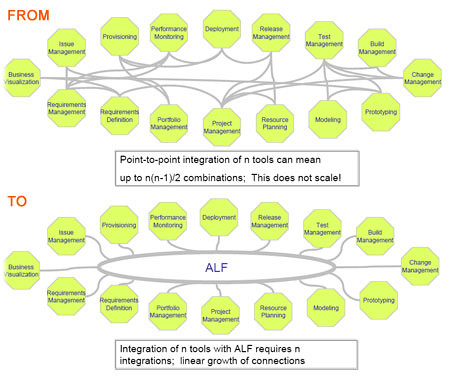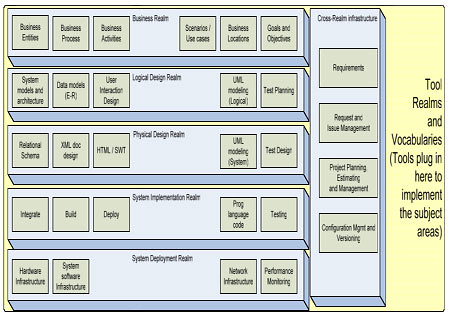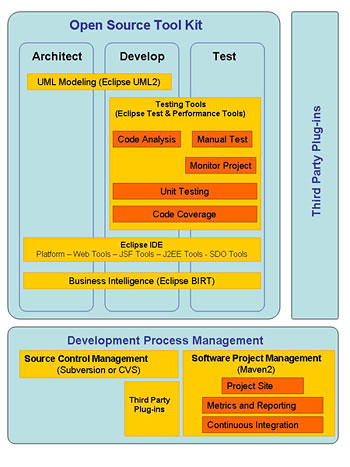Create a technology framework that will enable a diverse set of vendor tools, irrespective of architecture or platform, to exchange user data, manage business processes and collaborate in support the chosen ALM infrastructure technologies in use by development communities.
The ALF project plans to create a common and extensible domain specific vocabulary to facilitate domain modeling and provide an events and service flows model to enable loosely coupled tools integration. The technology will create a SOA leveraging web
services and web services orchestration to integrate disparate tools sets.
ALF is designed to build upon the other eclipse tools and to provide additional support for security, web service orchestration, service flow and meta models as illustrated below:
One example of how ALF could be used is illustrated below:
A user adds an issue to an issue tracking system which triggers an event that launches a service flow and determines whether the issue should be added to the Requirement Management System and Project Management System.
ALF plans to develop a meta model vocabulary based on the Zachman framework. The initial focus of the ALF will be on subject areas that cover:
- Requirements management,
- Request and issue management,
- Configuration management and versioning,
- Business process models






